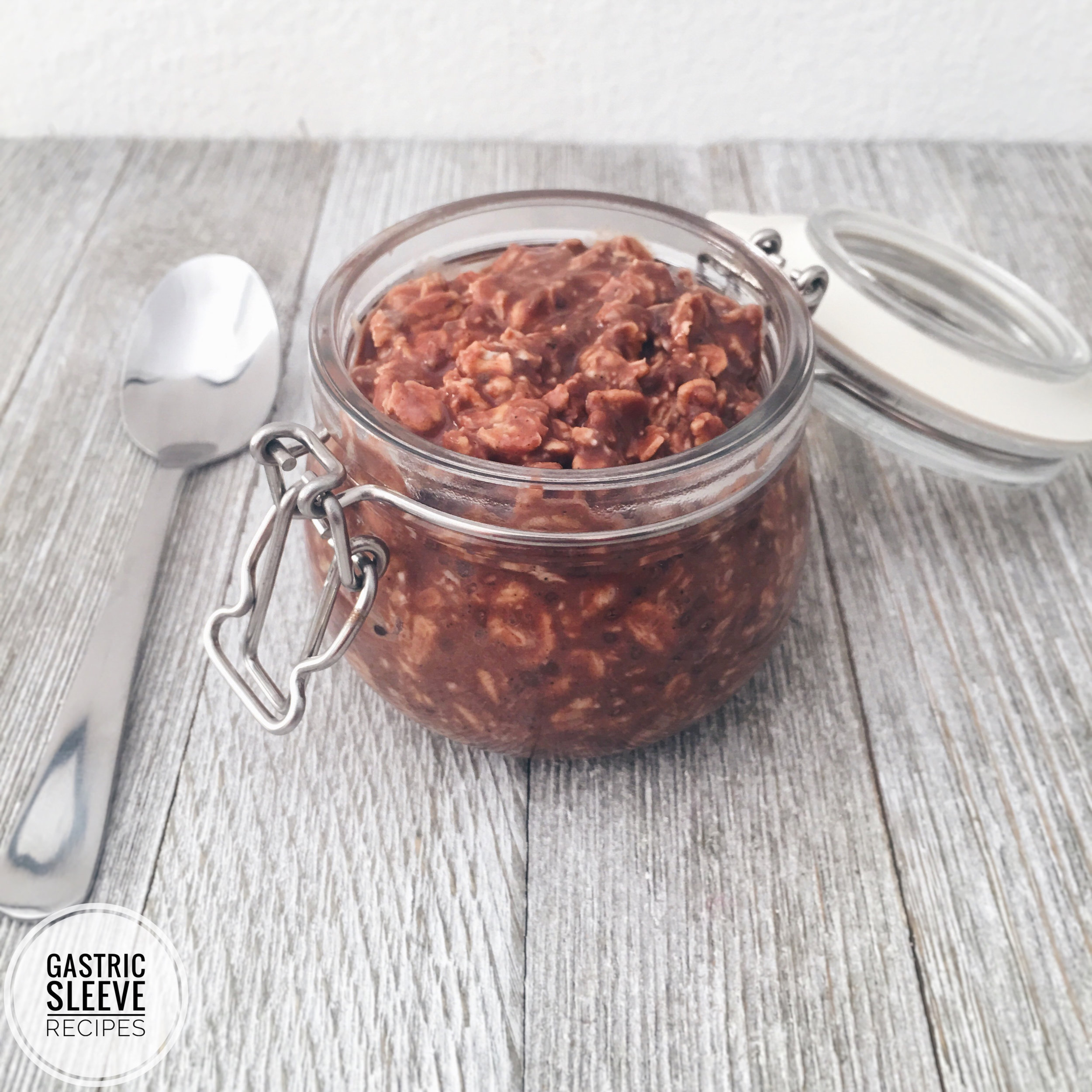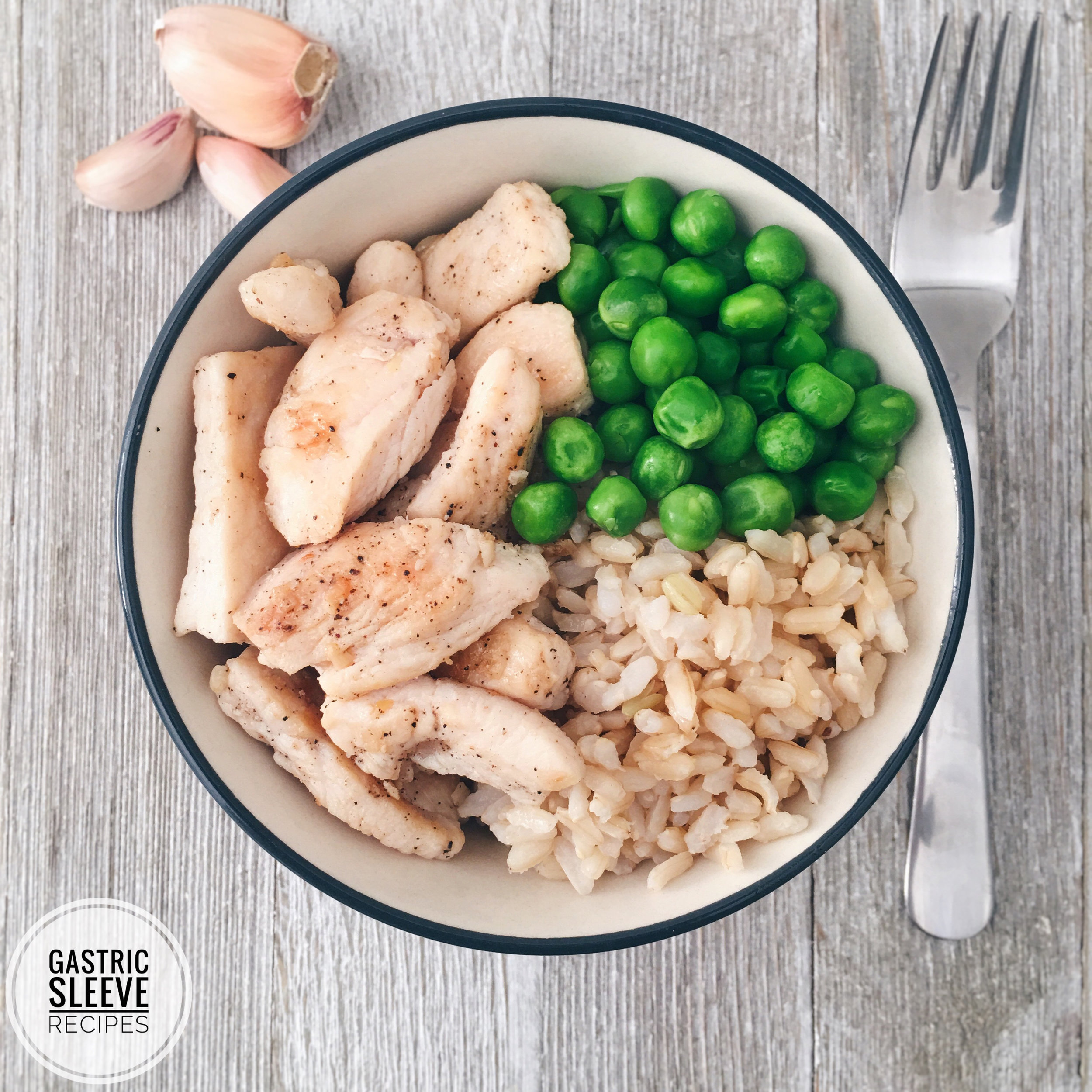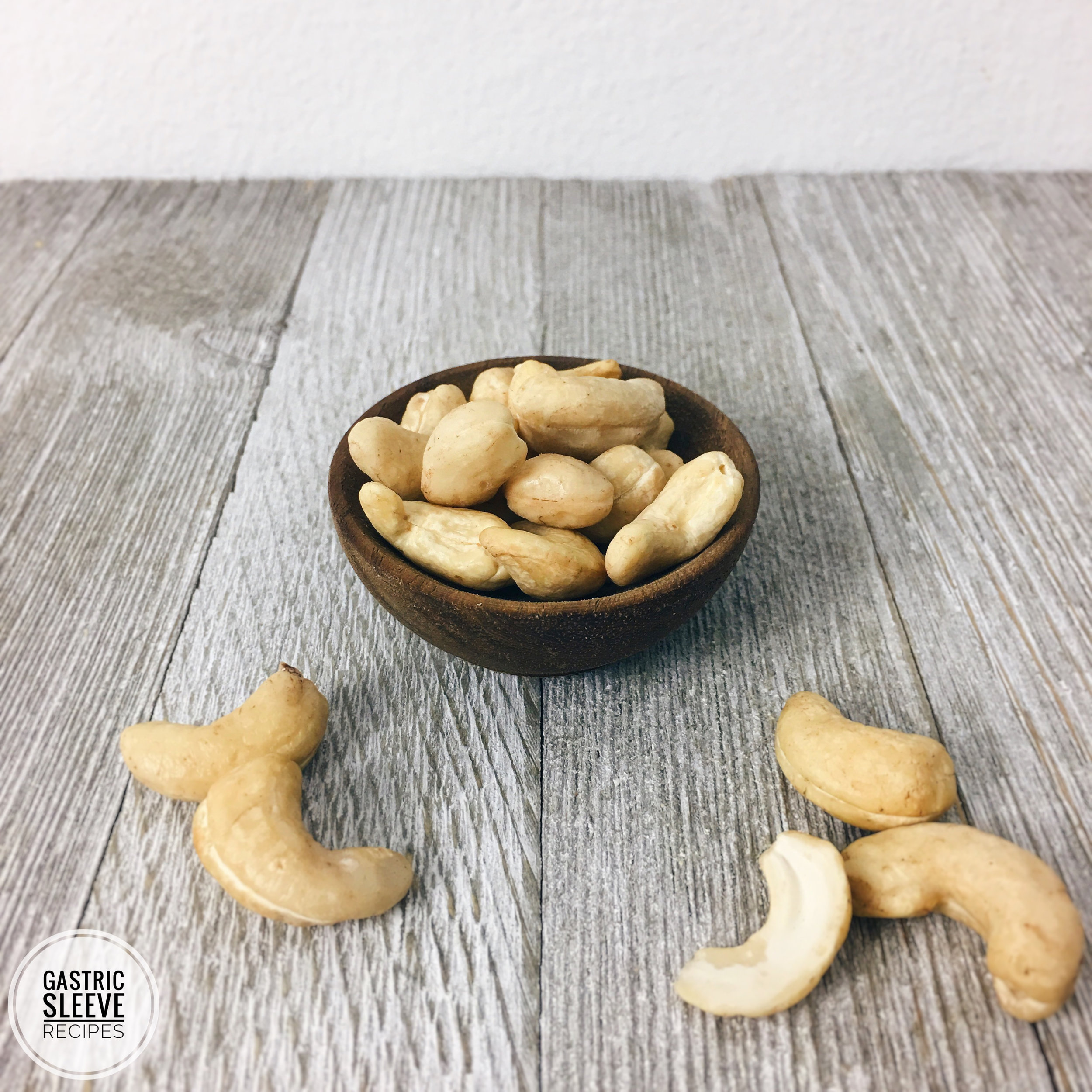POST-OP STAGE 6: TRANSITION FOODS
Description summary: This is the last stage of your post-op diet. It is designed for patients that are at least 3 months out of surgery. It introduces slightly larger portions per meal lots of new foods including fruits and nuts. We call this stage Transition Foods because it acts as an important link between the initial stages of solid foods to your lifelong diet. Once completed, you will be fully recovered from your surgery and able to enjoy all the new foods you have discovered through the post-op diet plus more to come!
Duration: 1 to 3 months (Days 90 to 180 after surgery)
Suggested daily meal schedule: 3 meals of 4-5 ounces each + 2-3 small snacks of 1-2 ounces each + 1 protein drink of 6 ounces (counts as either a meal or snack)
Goals:
- To slightly increase the size of each meal.
- Continue to introduce new foods.
- Continue to consume 60 grams of protein.
- Stay hydrated and drink 48 to 64 ounces of liquids per day (this will also be the goal for the long term)
- Comfortably eat 4-5 ounces of food per meal by the end of this stage.
AVERAGE NUTRITION FACTS PER DAY:
- Calories: 970
- Protein: 60 grams
- Carbs: 90 grams
- Fat: 41 grams
- Fiber: 13 grams
If for any reason you want to change one of the recipes in this meal plan, you can choose a different one from our Post-Op Stage 6 Recipes by clicking on the button below. Just make sure it has similar protein and calorie content, there are many options to choose from :)
MONDAY / DAY 1
SNACK #1
Raisins, unsweetened (no sugar added)(1 oz)
SNACK #2
Cashews, raw and unsalted (1 oz)
SNACK #3
Clementine (1/2 or about 2 oz)
TUESDAY / DAY 2
SNACK #1
Clementine (1/2 or about 2 oz)
SNACK #2
Almonds, raw (1 oz)
WEDNESDAY / DAY 3
SNACK #2
Raisins, unsweetened (no added sugar)(1 oz)
SNACK #3
Cashews, raw and unsalted (1 oz)
THURSDAY / DAY 4
SNACK #1
Almonds, raw (1 oz)
SNACK #2
Strawberries (2 oz)
SNACK #3
Cashews, raw and unsalted (1 oz)
FRIDAY / DAY 5
SNACK #2
Strawberries (2 oz)
SNACK #3
Cashews, raw and unsalted (1 oz)
SATURDAY / DAY 6
SNACK #1
Medjool Date (1)
SNACK #2
Almonds, raw (1 oz)
SUNDAY / DAY 7
SNACK #1
Name
SNACK #2
Cashews, raw and unsalted (1 oz)
SNACK #3
Medjool Date (1)
GUIDELINES
Full Description: This stage is the last stage of your post-op diet. It will include more diversity in the foods you eat and will act as an important transition from the initial stage of solid foods to your lifelong diet. Once completed, you will be fully recovered from your surgery and able to enjoy all the new foods you have discovered through the post-op diet plus more to come!
You will now be able to introduce a variety of new veggies. It is recommended to try them cooked or boiled first before trying anything raw. Certain fruits will also be added during this stage. It is important to cut them into very small pieces and chewing thoroughly (at least 25 times) to prevent any potential discomfort. Remember to eat your protein first during every meal.
Please note that this stage lasts about 3 months and adds lots of new ingredients but not all of them at the same time. To know exactly when you can eat you can visit our “When To Eat What” page on our website. It is important to keep in mind that every patient’s recovery process can vary, so you may only have to do this stage for a couple of weeks or up to 3 months, even more. Either way, it is crucial to be patient with your body and learn to listen to it and give it what it needs.
Approved foods: To download a complete list of the approved foods up until this stage please click on the button below. Please note that certain foods are not recommended until after you complete this stage.
Tips and Guidelines:
- Eat your protein first! If you are having trouble finishing your meal then prioritize the protein (protein drinks, chicken, turkey, fish, eggs, and tofu).
- You must stop drinking all fluids 30 minutes before and after each meal. Drink minimally (or nothing if possible) during meals. Since your stomach has decreased considerably in size, this will help you to fill up with food and not just liquids.
- Eat slowly and only small bites at a time to prevent any vomiting or discomfort (some patients experience the unpleasant feeling of food getting stuck at the entrance of their stomach when they take too big of a bite).
- Chew your food thoroughly (25 times per bite).
- If you are having trouble finishing your food during each meal, it is perfectly fine to take a small break for a couple of minutes and then continue eating. Try to finish your food for the day but never if it means pushing your stomach to eat more than you feel it can.
- Continue drinking 48-64 ounces of liquids per day. Protein drinks count as liquids, not meals. As part of this meal plan you should add 4 ounces of diluted 100% fruit juice or undiluted coconut water and 8 ounces of low sugar electrolyte drinks per day. You should drink the juice if you feel lightheaded at any point during the day. As your recovery progresses we will reduce juice consumption until we eliminate it completely. All other liquids should consist of mostly water.
- Add new foods one at a time so that you can easily identify any that don’t go too well with your new pouch. If a new food does not suit you well, eliminate it from your diet for a week or two and then try it again to see if you can tolerate it. If not, then maybe this food will not go well with your diet anymore.
- Avoid beef or any steaks, as this is food especially common to cause the feeling of food getting stuck given its tough texture. Ground beef is ok as long as it is at least 90% lean.
- If solid foods cause any discomfort then it is perfectly normal to go back a stage for a day or two and then try again. Experiencing this trial and error process is completely normal during your recovery.
- One part of the stomach that was removed during surgery was in charge of producing the Ghrelin hormone, also known as the “hunger hormone.” This will help you to feel less hungry but it is very important to eat constantly throughout the day to keep your body nourished. Set reminders on your phone if you are having trouble remembering to eat.
- Eggs, dairy, and rice are common new intolerances developed after surgery, so add them slowly back into your diet. If eating them causes discomfort or any intolerance then stop eating them and wait until after this stage to try them again. If you have already experience symptoms of intolerance in previous stages and they persist during this stage, you should consider the possibility that you may have become intolerant to them and should no longer consume them. You can replace rice with quinoa in all recipes.
- Use a food scale and measuring spoons. It is very important to use the exact measurements we provide on the meal plan. Our recipes give measurements in both volume/amount and in grams so you are able to weigh everything. We use grams instead of ounces because it can be a more exact measure.
- Do not weigh yourself more than once per week. Pick a day of the week (we recommend Wednesdays or Thursdays) and weigh yourself every week only on that day and in the morning before having liquids or food. Weighing yourself too often can create too much mental pressure.
- Everyone’s bodies are slightly different so your recovery could be slightly faster or slower than others. It will be important, however, to remember that the size of your stomach has shrunken considerably and that you will not be able to eat as much as before. This stage continues to slowly incorporate real food back into your diet, but it may take up to 6 months after surgery for you to be able to eat most foods again.
Exercise: It is recommended all patients avoid exercise during this stage. It important to take it slow and keep in mind that you will already be losing a lot of weight through diet alone.
It is not recommended to exercise until you almost reach your goal. Exercising as a way to lose weight is counterproductive at this point in your recovery. Since your stomach has shrunk in size considerably and you have still not fully recovered, it will be difficult for you to recover burned calories during exercise. This can lead to increased hunger, decreased energy levels, and a slowdown in your metabolism, all of which will work against your weight loss goals.
Instead of exercising, it is recommended to go for light walks or simply walking constantly during the day. Try aiming for 4,000 to 5,000 steps per day. You may download an app on your phone to help you track this. Longer-term, it is important to keep in mind that exercise is not the best way to lose weight, but rather changes in our diets.
Vitamins and Supplements: Continue taking supplements as indicated in Stage 5. It is recommended that you always take them with food or liquids. The suggested vitamins and supplements are the following:
- Multivitamins
- Take 2 chewable multivitamins per day, one with breakfast and one with dinner.
- Chewable vitamins are often more easily absorbed by the body. Make sure they are for adults and not for children.
- Recommended brand: Centrum Chewable Multivitamin/Multimineral Supplement.
- Vitamin B-Complex
- Take 1 B-Complex chewable vitamin per day with breakfast.
- Recommended brand: Vitafusion B Complex Gummy Vitamins.
- If you choose a different brand just make sure it contains at least 100% of your daily B-12 requirements.
- Calcium Citrate
- There are 2 different types of Calcium: Calcium Citrate and Calcium Carbonate. Make sure to take Calcium Citrate because absorbed better by the body.
- Recommended brands: Rainbow Light Calcium Citrate Chocolate Chewable, Solaray Calcium Citrate Chewable.
- Whichever brand you choose, make sure to get a total daily dose equal to 1,000 mg per day. Take half during breakfast or lunch and the other half during dinner.
- Iron
- Take during breakfast. Make sure to not take at the same time as calcium.
- The required dosage is 18 mg to 25 mg.
- Recommended brands: NutriPure Melts in Mouth Chewable Iron, BariMelts Iron + Vitamin C.
- It is recommended to take your iron supplements with a dose of Vitamin C for better absorption. The recommended brands already include some Vitamin C.
- Gallbladder pills (optional but highly recommended)
- When your body loses weight at a drastic pace, your gallbladder may be at risk of developing stones. The purpose of taking these pills is to help prevent any formation of these stones.
- Take 1 serving per day for the first 6 months. After that, you may discontinue it.
- Recommended brand: Stone Breaker Chanca Piedra (pulverize and dilute in water).
- Protein Supplements
- It is somewhat common for patients to develop dairy intolerances after surgery. Whey protein is derived from dairy, so if you are having trouble consuming these types of protein supplements, we highly suggest switching to plant-based sources. You can also start directly with plant-based sources if desired.
- All of our protein drink recipes use protein powder and other natural ingredients to boost their nutrient content and make them taste nice. If you do not want to drink them, you can replace protein drinks in the meal plan with 1/2 of a pre-made Premier Protein shake per day of your flavor of choice. Other liquids that you can replace them with are Protein2O (whey-based) and Evolve (plant-based), just make sure to get 60 grams of protein per day.
- Recommended brands: Gold Standard 100% Plant-based (plant-based powder), Gold Standard 100% Whey (powder), Vega Clean Protein (plant-based powder), Isopure (powder), Protein2O (pre-made drink).
- If you prefer to buy another brand just make sure it meets the following nutrition requirements per serving.
- Calories: 110 to 130
- Protein: 20 to 25 grams
- Fat: No more than 7 grams
- Carbs: No more than 5 grams
- Fiber Supplements
- During this stage it is also recommended to add a fiber supplement. Once you finish this stage and are able to eat more, you should try to obtain all dietary fiber from food alone.
- Take one serving per day together with any snack. Serving size should be around 5 grams of fiber.
- Recommended brand: FiberAdvance Gummies.
- Suggested supplements schedule:
- Morning: Multivitamin, B-Complex, Iron, Gallbladder
- Lunch: Calcium citrate (half)
- Dinner: Multivitamin, Calcium citrate (remaining half)











































